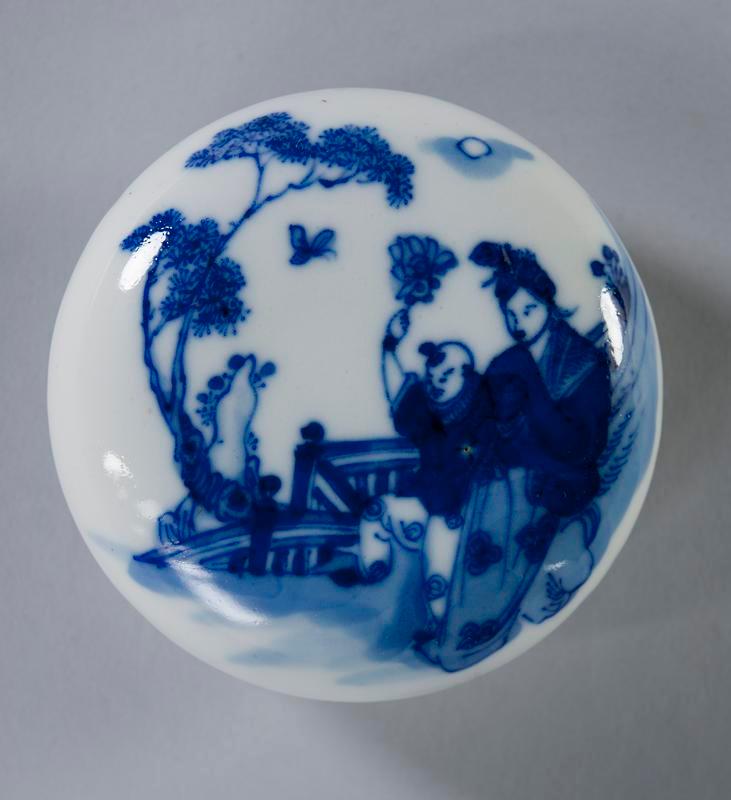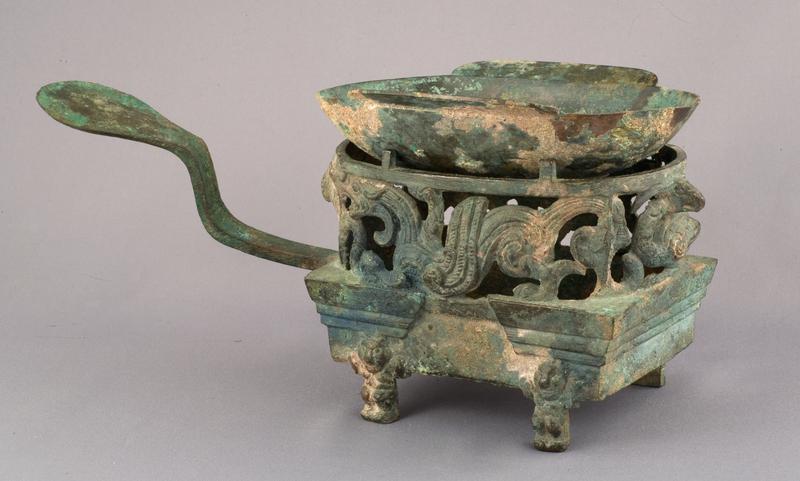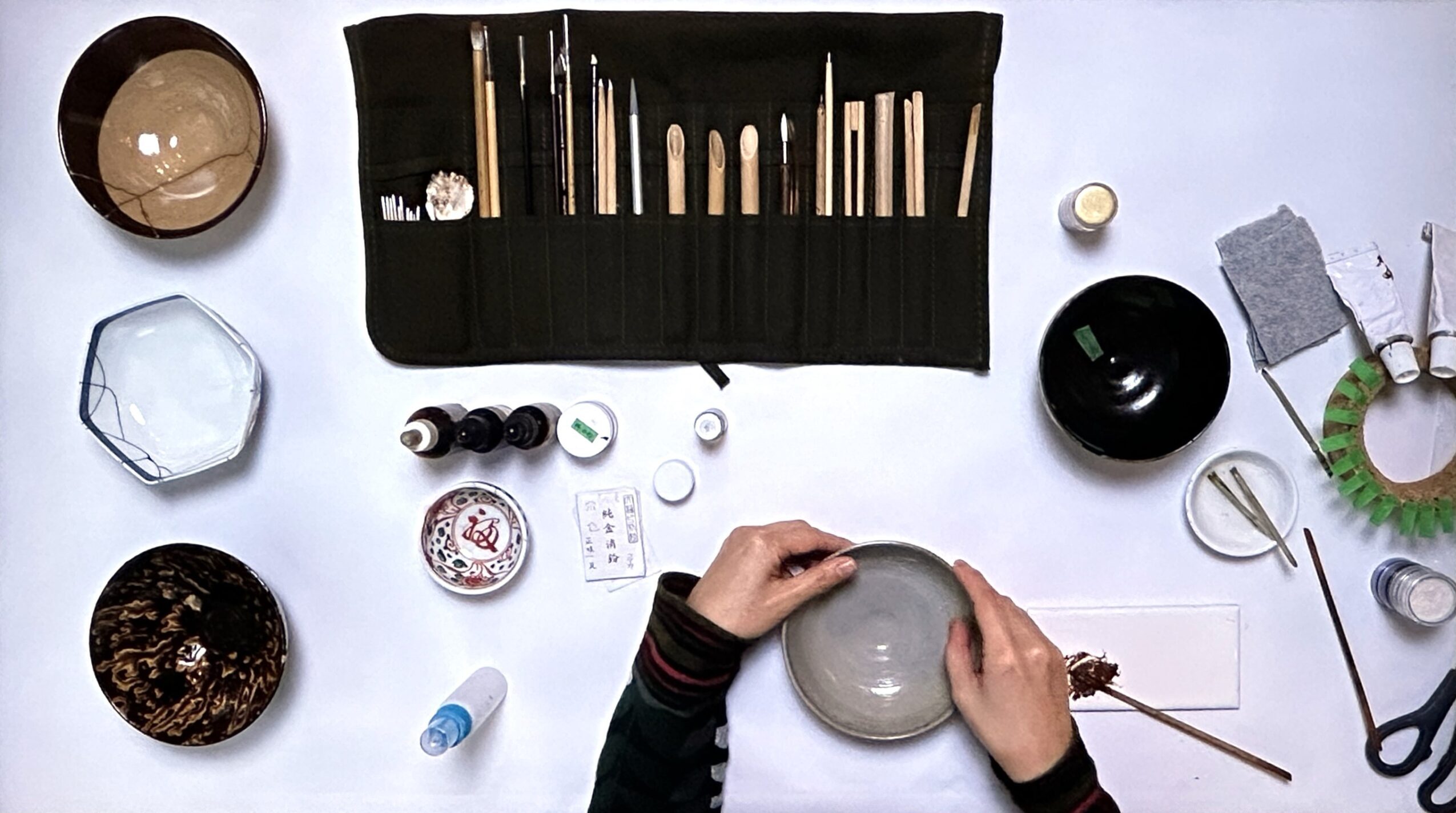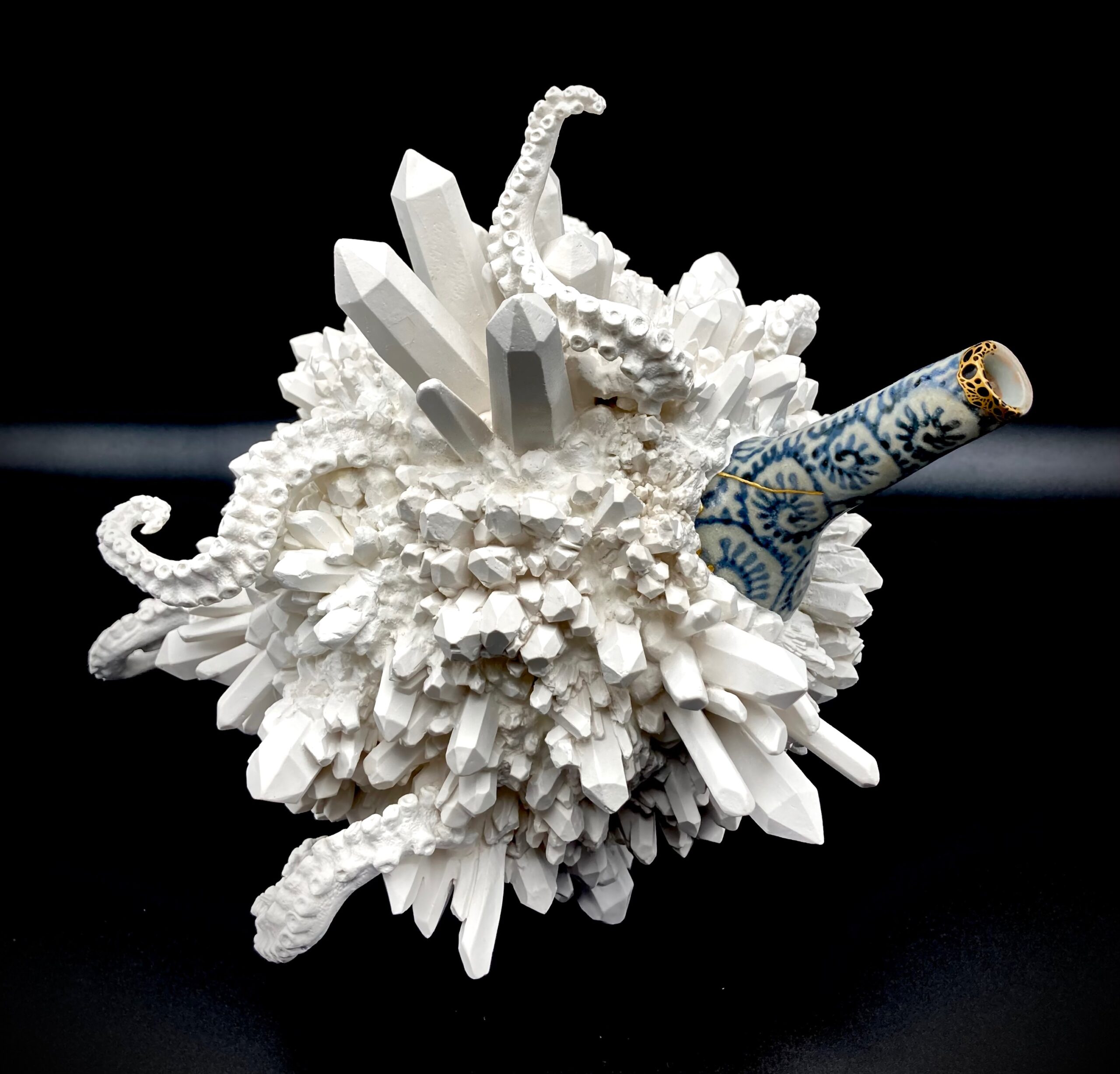By Audrey Wang, AGGV Volunteer
1. Seals were used well over 3,000 years ago in China to authenticate official documents. They continued to be used throughout Chinese history, acting as a signature for documents, but also in paintings and calligraphies. In such artworks, one would find the seal chop of the artist or calligrapher, as well as the seals of the owner(s) of the artwork.
2. Seal stones were important scholar’s implements. A scholar from the literati set might own a few different seals. They would be kept in a wood box and be accompanied by a small porcelain or lacquer seal paste container, such as the example in the AGGV Asian Art collection (below).

2. Seal stones were made from a variety of hard substances, including jade, soapstone, glass, bronze, porcelain and various types of hard and soft stones. Jade and tianhuang stone are among the most coveted materials.
3. The seal stones were sometimes a plain oblong block with no decoration, or carved with designs (painted or enamelled in the case of porcelain seals). Where decoration appears, the designs were carved by artisans skilled at using the attributes of the material to enhance the design. Designs would include animals, floral scrolls, simple mountain landscapes, or more elaborate sculptural features such as the example above.
4. From the Yuan dynasty (1271-1368) onwards, the literati began carving the seal characters, as this reflected their literati aesthetic and calligraphic style. With the many scripts in Chinese calligraphy, so the end-users of the seal stone would carve the characters in a script that he found most suitable.
5. The art of seal cutting reached greater heights in the 18th century when calligraphic ‘schools’ were founded, and this continues to the present day. On seals carved by master craftsmen, one might also find a finely incised colophon and signature as part of the decoration.
6. Seal imprints come in two types – in relief and incised. In the case of the former, the characters are carved in relief (as in the example featured above), with the background removed. When incised, the imprint is in reverse.
7. For seal cutting, a tool called an “iron brush” was developed for scholar-artists to use easily to carve at home. The long chisel-like knife is similar in size to a brush. The material it cut had to be sufficiently soft to be cut freely, but also hard enough to leave many impressions without showing wear.
8. Seal chops were not only carved with signatures or the name of the owner. They were also carved with place names (such as the name of a palace or a pavilion), with commemorative dates (such as a milestone birthday) or with a family motto or a wise saying.
9. The Chinese emperors of the Ming and Qing dynasties owned a wide variety of seals, many of them commemorative. Unlike the small seals used by scholars, Imperial seals made from nephrite could be large and very heavy.
10. Seals made from precious materials with significant histories, such as Imperial seals, are highly coveted on the art market. In 2016, Paris auction house Drouot sold a red and beige nephrite jade seal which had belonged to the Emperor Qianlong (1736-95) for a record 21 million euros.
Feature image: Soapstone seal carved with a figure | not dated | 6.5 x 2.1 x 2.1 cm | The Murray and Ann Bell Asian Collection (2010.042.089)



